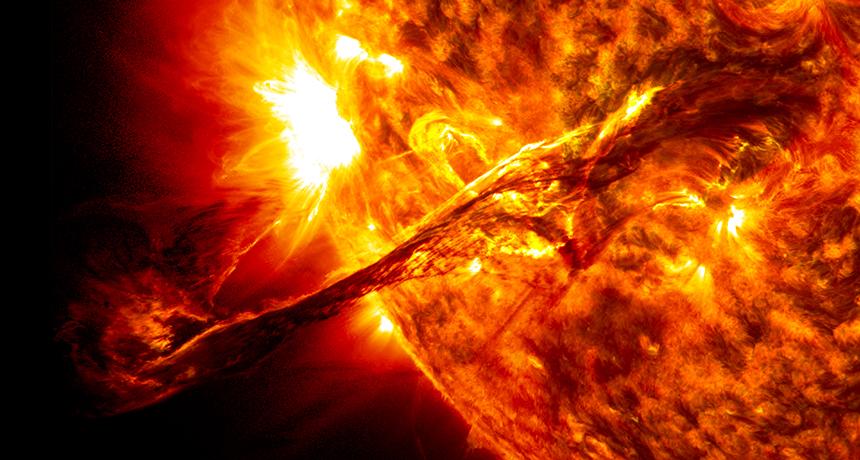
X-rays offer early warning for solar flares
Science News, April 2015Outpourings of X-rays can reveal when the sun is prepping a big outburst, new research suggests.

Outpourings of X-rays can reveal when the sun is prepping a big outburst, new research suggests.
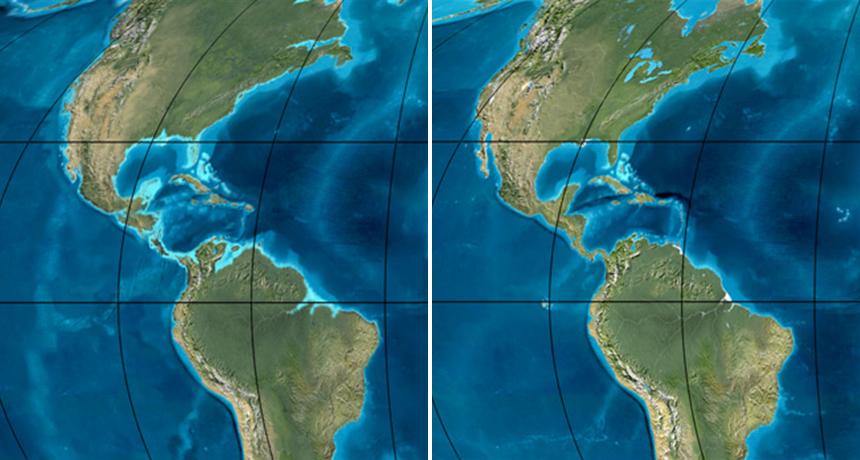
North and South America may have hooked up 10 million years earlier than thought.
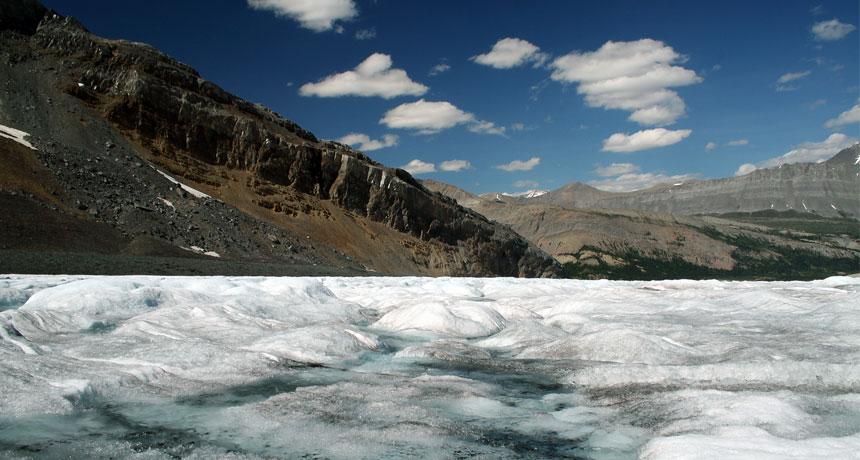
The Great White North may lose its glaciers faster than previously thought. A detailed physics simulation of how glaciers melt in a warming world show that Western Canada’s glaciers will shed 70 percent of their ice by 2100 relative to their 2005 volumes, researchers report online April 6 in Nature Geoscience. That level of melt would raise global sea levels by roughly 4.4 millimeters and reshape the region’s landscape.
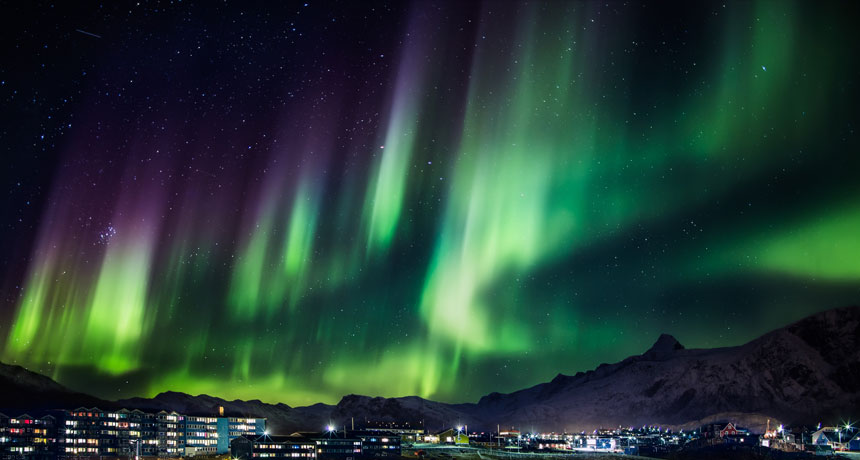
The Twitterverse can help you catch a glimpse of the shimmering northern lights. The NASA-backed Aurorasaurus project uses crowdsourcing to assemble a real-time map of aurora sightings around the Northern Hemisphere. Aurora-related tweets and reports made by citizen scientists feed in to the project through its smartphone apps and website.

Bitter bouts of unusually cold days will become less frequent in much of the Northern Hemisphere as the planet warms, two new studies suggest.
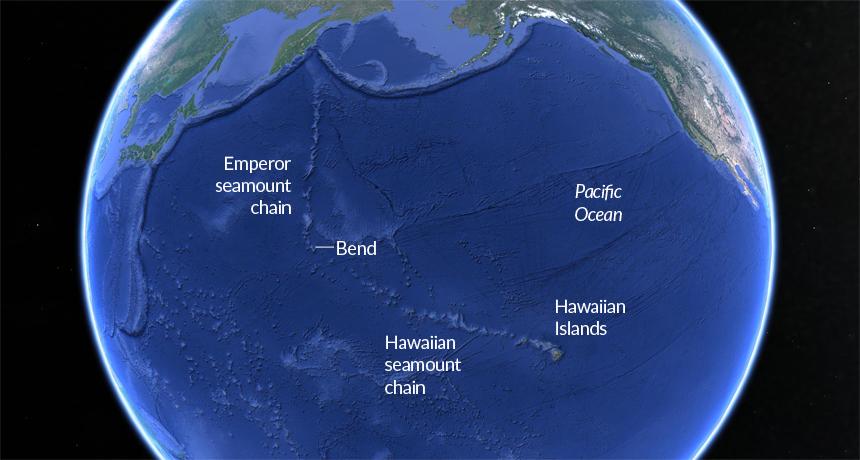
The disappearance of a tectonic plate into Earth’s interior may be responsible for the distinctive bend in the chain of underwater mountains and islands that includes the Hawaiian archipelago.
Adapted for Science News for Students.
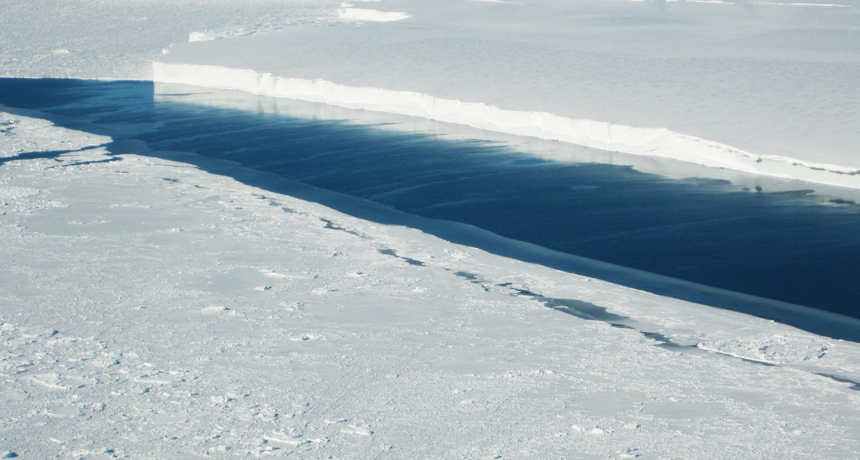
Antarctica’s ice shelves are shrinking at an accelerating rate, one of the longest satellite records of ice thickness reveals. Researchers report online March 26 in Science that several West Antarctic ice shelves are now on pace to disappear completely within 100 years.
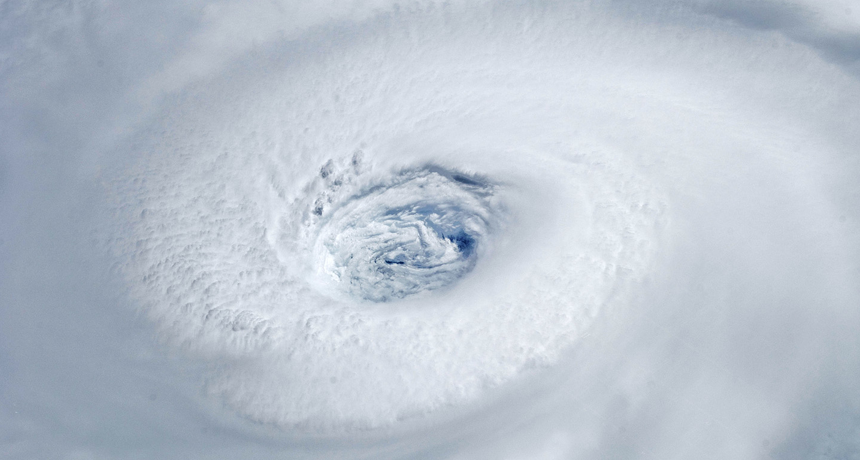
Heavy downpours put a damper on hurricanes, new research suggests. Running simple hurricane simulations, researchers have demonstrated that descending raindrops produce significant friction as they fall along the edges of a hurricane’s eye. This friction slows the powerful winds that drive the storm, lessening the hurricane’s intensity by as much as 30 percent, the researchers report in a paper to be published in Geophysical Research Letters.

Jack Frost’s fury is deadlier than a major report implies, new research suggests.
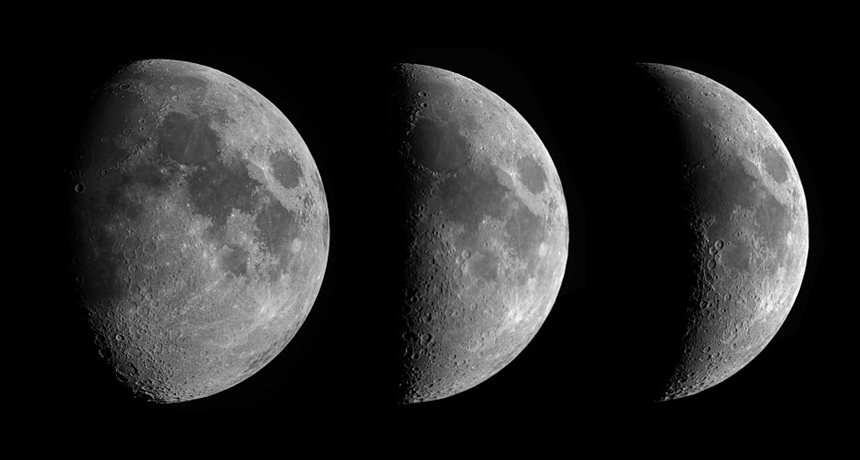
The Earth and moon’s celestial dance was a lot wilder during the pair’s youth. By simulating the early moon’s orbit, researchers have reconstructed what the moon’s phases would have looked like during the solar system’s early years. The result, presented online March 10 at arXiv.org, reveals a moon that alternated rapidly between its sunlit and shadowy sides and bounced like a ball toward and away from Earth.